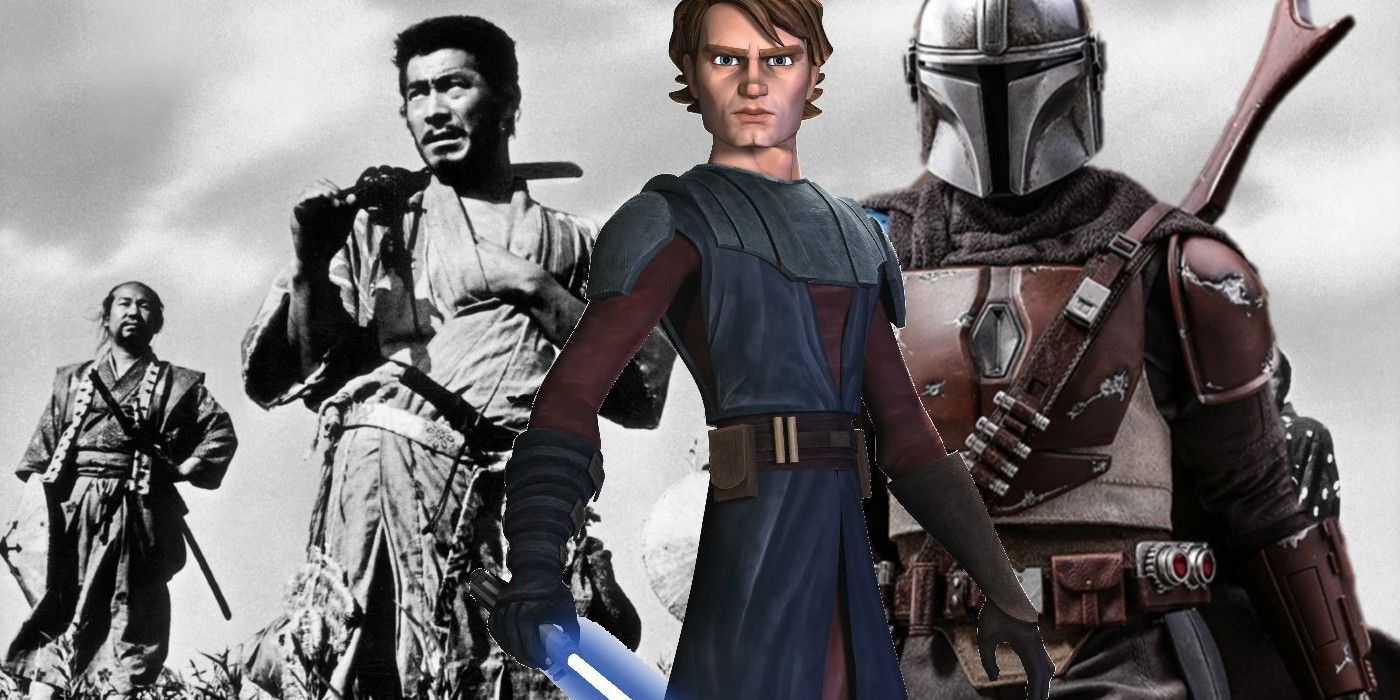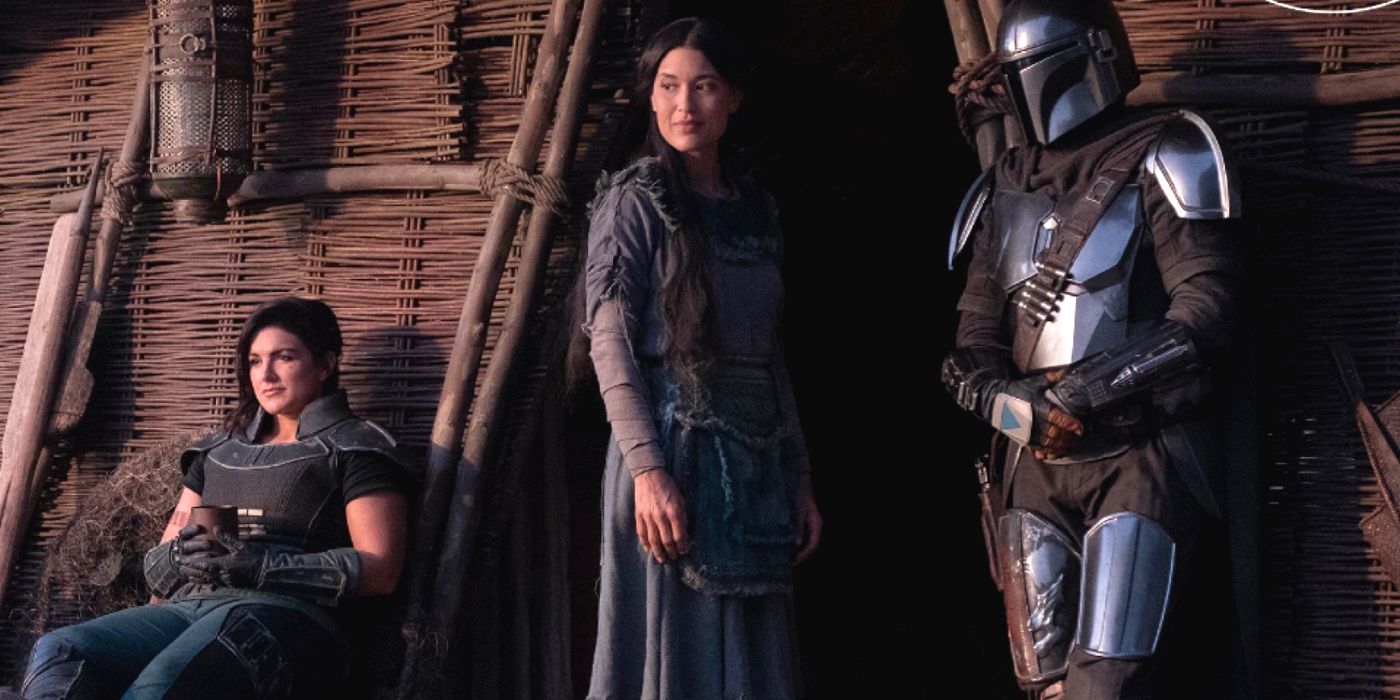
Both The Mandalorian and Star Wars: The Clone Wars borrowed heavily from the plot of Seven Samurai for certain episodes. Released in late 2019, The Mandalorian proved to be an early Christmas present for Star Wars fans, delivering a debut season largely comprised of gripping standalone adventures. Both in spirit and visual design, The Mandalorian exuded the aura of classic western movies, with Mando himself as the heroic renegade gunslinger riding into a strange town. Paying homage to its roots, The Mandalorian is packed with western references and allusions, nodding towards films such as Butch Cassidy & The Sundance Kid, A Fistful of Dollars and Shane.
By far the most overt of The Mandalorian's western references comes in episode 4, "The Sanctuary." This effort sees Din Djarin take Baby Yoda to the backwater planet of Sorgan in an attempt to lie low from the Empire and Din's disgruntled bounty hunter colleagues. There, the iconic pair meet a former rebel named Cara Dune and take up residence in a simple rural village currently under threat from Klatoonian raiders. Although Mando initially takes the job of protecting the village purely for the money, he and Dune both become invested in the peoples' plight. They train the modest farmers in combat and make a final successful stand alongside the villains.
While the episode is a clear homage to The Magnificent Seven, that itself is a western remake of Akira Kurosawa's heralded 1954 effort Seven Samurai. The Japanese film sees the titular septet of warriors come together with the mission of protecting a peasant farming village from invaders during the harvest. The samurai teach their hosts the basics of fighting, learn the consequences of their violent lifestyles and become personally embroiled in the battle. While the parallels between The Mandalorian's "The Sanctuary" episode and Seven Samurai are not subtle, Star Wars: The Clone Wars aired an even more directly influenced episode years prior.

Season 2 of The Clone Wars featured the appropriately titled "Bounty Hunters" and in many ways this offering comes even closer to Seven Samurai. This story sees the Jedi trio of Obi-Wan Kenobi, Anakin Skywalker and Ahsoka Tano work alongside a group of 4 bounty hunters to protect a farming village on the planet of Felucia. As with Seven Samurai and The Mandalorian's "The Sanctuary", the professional fighters train the locals to defend their crops and help repel a band of pirates demanding tribute. Unlike The Mandalorian, there are actually seven "samurai" characters in this Clone Wars episode, rather than just Djarin and Cara Dune, and the tension between the Jedi and bounty hunters better reflect the dynamic between the rogue samurai in Kurosawa's original film.
These close homages (a nicer way of saying rip-offs) prove how influential Seven Samurai has been to cinema, and there are plenty of similar examples outside of Star Wars. Nevertheless, it's certainly interesting that two separate Star Wars projects released many years apart would derive stories from the same source. This is likely a callback to George Lucas' original inspirations for the franchise. Plenty of lines can be drawn between Seven Samurai and 1977's original Star Wars movie - small-time farmers (the Rebel Alliance) struggle against the oppressive and greedy invaders (The Empire) and succeed thanks to the aid of kind-hearted warriors who show them the way (the Jedi).
More than Seven Samurai, however, Lucas took much from Kurosawa's The Hidden Fortress. From Queen Amidala disguising herself as a servant to a villain helping the good guys right at the very end, Star Wars would look very different without Akira Kurosawa. Arguably, the galaxy far, far away wouldn't exist at all. As such, it's fitting tribute that both The Clone Wars and The Mandalorian take Star Wars back to where it began... and steal more of Kurosawa's ideas in the process.
from ScreenRant - Feed https://ift.tt/3cPWTnR

No comments: